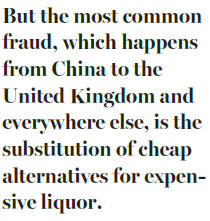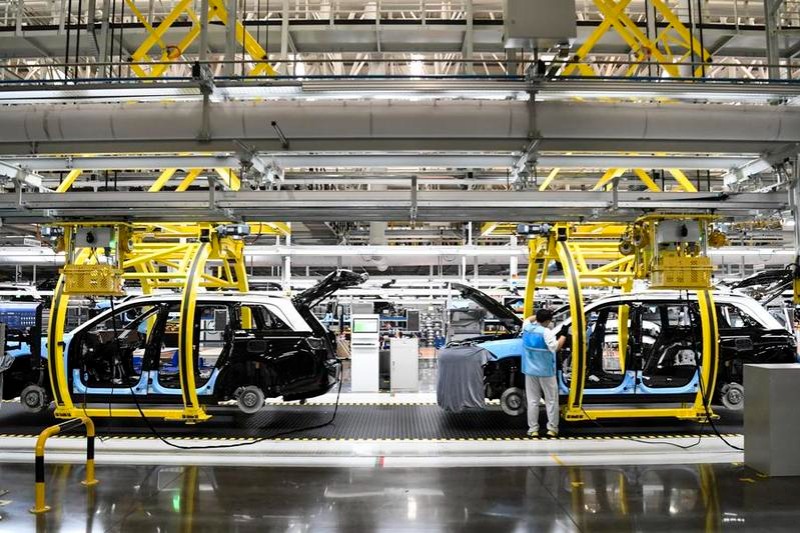Whisky trickery offers valuable lesson

When people are willing to pay large prices for anything, counterfeiters and criminals are never far behind
In the novel (and later film) Whisky Galore, author Compton McKenzie endows whisky with mystical and medicinal properties. When supplies run out in the fictional islands of Greater Todday and Little Todday because of World War II, the islanders become mired in sectarian disputes and family squabbles.
Harmony is restored when a ship laden with whisky for export to the United States runs aground in the channel between the two islands. The islanders overcome their differences and unite to outwit the authorities to liberate as much of the whisky they can. In the novel, a character states: "Love makes the world go round? Not at all. Whisky makes it go round twice as fast."
The book was based on true events and, likewise, the experience of Chinese author Zhang Wei in Switzerland last month seems fictional but is true. Not only did he pay £7,600 ($9,985; 8,600 euros) for a measure of whisky at the Devil's Place bar at the Waldhaus am See hotel in the Swiss ski resort of St. Moritz, but the whisky was not what it was purported to be.

The writer and the staff believed the whisky came from an 1878 Macallan single malt. When suspicious investigators examined it, they found it was neither a single malt, nor particularly old - probably from the 1970s.
When people are willing to pay large prices for anything, counterfeiters and criminals are never far behind. Earlier this year, police arrested a 41-year-old man in North London after they discovered a bottling operation where nonvintage whisky was siphoned into old bottles with fake labels and offered for sale for thousands of dollars each.
Isabel Graham-Youll, a director of Whisky Auction, assisted the police. She told Scotch Whisky magazine that the fakes were exceptionally good quality and very difficult for anyone but an expert to spot.
That should be a lesson to anyone willing to spend large amounts of money on the fleeting pleasures of a fine malt, but counterfeiters cater to all price points.
At the lower end of the market, bootleggers make their own spirits and bottle and sell them to people who are grateful for any discount. These drinks can be lethal; batches of fake alcohol killed 74 people in Siberia last year and 84 people in Mumbai in 2015.

But the most common fraud, which happens from China to the United Kingdom and everywhere else, is the substitution of cheap alternatives for expensive liquor. This normally happens when drinks are mixed with soft drinks or served as cocktails, since even connoisseurs would find it difficult to tell the difference between the true and the false.
But the real money lies in luxury whisky and brandy, where bottles can go for more than $200,000 and are treated as investments rather than something to drink. Rarewhisky 101 tracks the value of rare whiskies, and its Icon 100 Index shows that the value of 100 well-known whiskies has risen by 405 percent since 2008 - far better than most pensions and investments.
Even the whisky from the SS Politician - the whisky transporter that ran aground in 1941 and inspired Whisky Galore - has its price. Two bottles that were salvaged from the wreck were sold in 2013 for £12,050.
The author is a senior editor at China Daily UK. Contact the writer at [email protected].
(China Daily European Weekly 11/10/2017 page11)
Today's Top News
- Tariffs take heavy toll on US first and foremost: China Daily editorial
- Washington stands in the way of efforts to end humanitarian disaster in Gaza
- Xi, Trump hold phone talks
- Combat IUU fishing, but don't use it as a political tool
- Mainland police reward tips to capture 20 Taiwan suspects in cyberattack
- Greetings sent to Lee as new S. Korean president






























